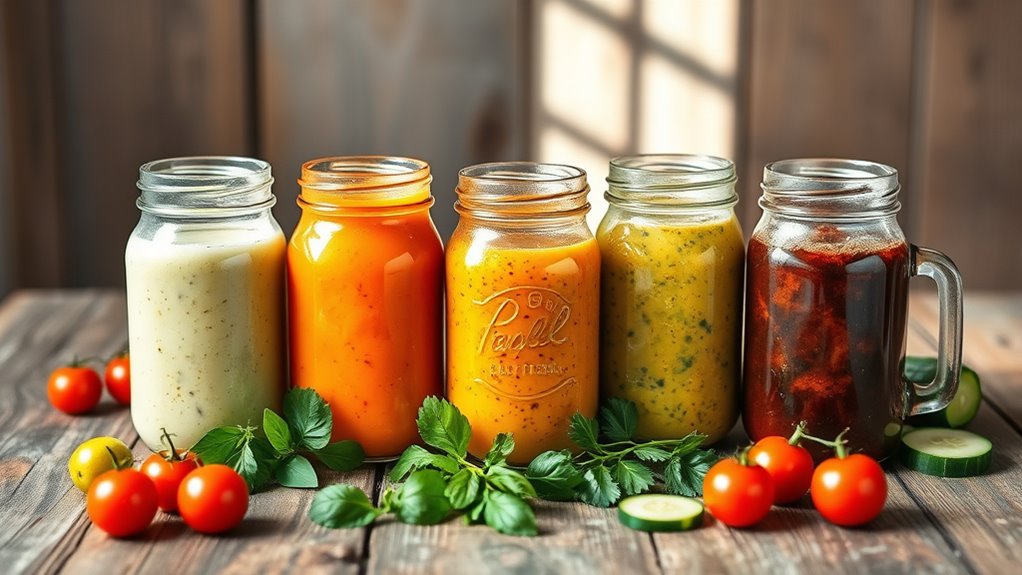If you’re after Whole 30 salad dressings, start with a simple base of 1 part acid to 3–4 parts oil, choosing olive or avocado oil for healthy fats and acids like apple cider or red wine vinegar. Whisk or blend with your favorite herbs, garlic, or onion until smooth, then adjust with a splash of water or extra oil. Label your creations and vary oils and acids for variety—you’ll uncover practical tips for even bolder flavors as you go.
Ingredients and Quantity
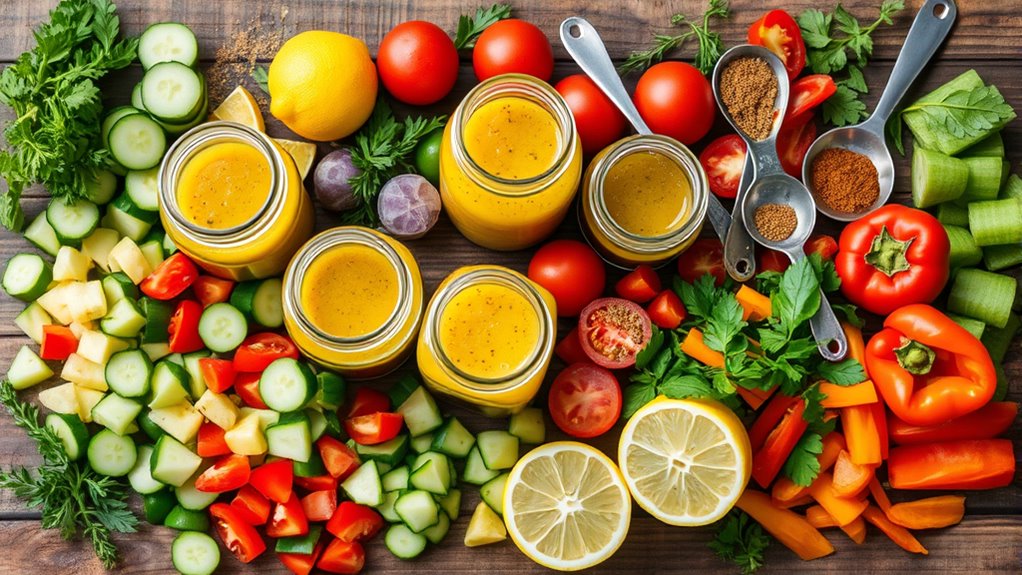
For Whole30 salad dressings, start with simple, whole-food ingredients and precise amounts to guarantee compliant, flavorful results. You’ll keep to a focused set of ingredients, balancing flavors with measured quantities. Choose salad oils and vinegar types that align with Whole30 guidelines, then fine-tune by taste. Use 1 part acid to 3–4 parts oil as a baseline, adjusting for thickness. Aim for minimal additives, clean labels, and fresh herbs to boost brightness without compromising compliance. This approach supports freedom through predictable results you can trust.
| Ingredient | Quantity |
|---|---|
| Salad oil (olive or avocado) | 3 tbsp |
| Vinegar types (apple cider, red wine) | 1 tbsp |
Preparations
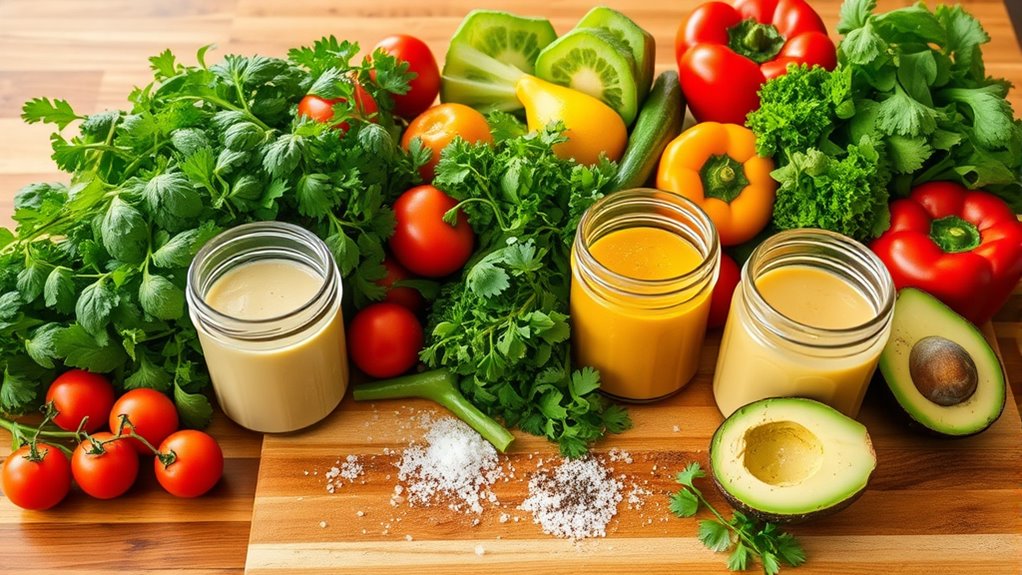
Preparations involve whisking or blending your chosen oil and acidity with any additional seasonings until the dressing is smooth and emulsified. You’ll control texture and flavor by balancing fat, acid, and salt, then adjust with herbs or citrus as desired for versatility.
- Master emulsions by a steady whisk or short blend, ensuring cohesion across all ingredients.
- Test consistency—add a touch of water or oil to reach your preferred pourability.
- Vary dressings by changing acids (vinegar, citrus) and oils (olive, sesame) to explore salad variations.
- Label your dressing types for quick use and future meals, keeping compatibility with Whole 30 guidelines.
Kitchen tools or Kitchenware Required
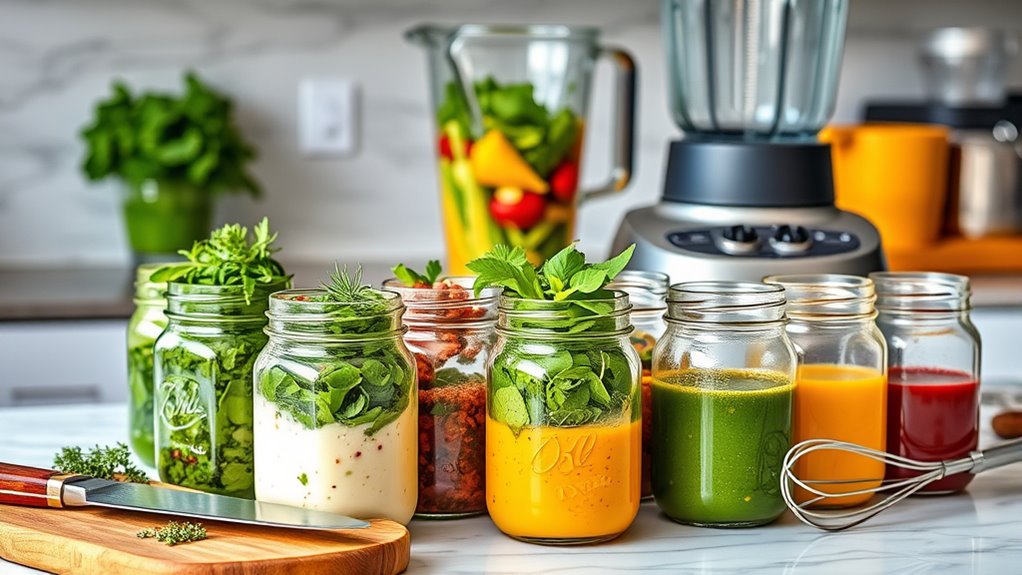
To make Whole 30 salad dressings reliably, you’ll want a few staple tools that keep flavors emulsified and textures smooth. A blender or immersion blender handles emulsifications quickly, while a whisk aids small-batch mixes. Choose reliable storage containers to keep dressings fresh and portable. For best results, use glass or BPA-free plastic with tight seals. Clean-up should be swift and simple to preserve flavor integrity.
| Tool | Purpose | Benefit |
|---|---|---|
| Blender options | Emulsifies quickly | Smooth, cohesive dressing |
| Storage containers | Hold and transport | Keeps flavors fresh |
| Whisk or jar with lid | Manual emulsification | Control over texture |
How to Cook
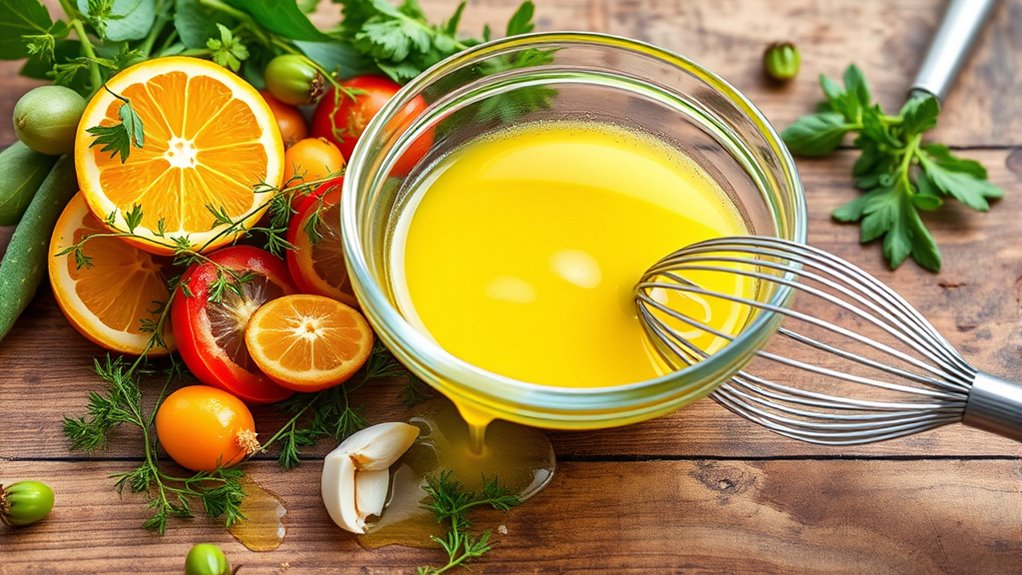
- Choose a base: start with olive oil combined with vinegar or citrus juice for emulsification, or create a blended, citrus-forward mix to keep the dressing bright.
- Add seasoning: incorporate herbs, garlic, or finely minced onion to enhance flavor without adding sugar.
- Balance textures: whisk or shake the mixture to emulsify; add a splash of water if the dressing is too thick.
- Adjust for goals: taste the dressing and tailor salt, citrus, or mustard to suit your preferred flavor profile.
These steps support various salad variations and provide flexible, evidence-based options for clean eating and culinary freedom.
How to Serve
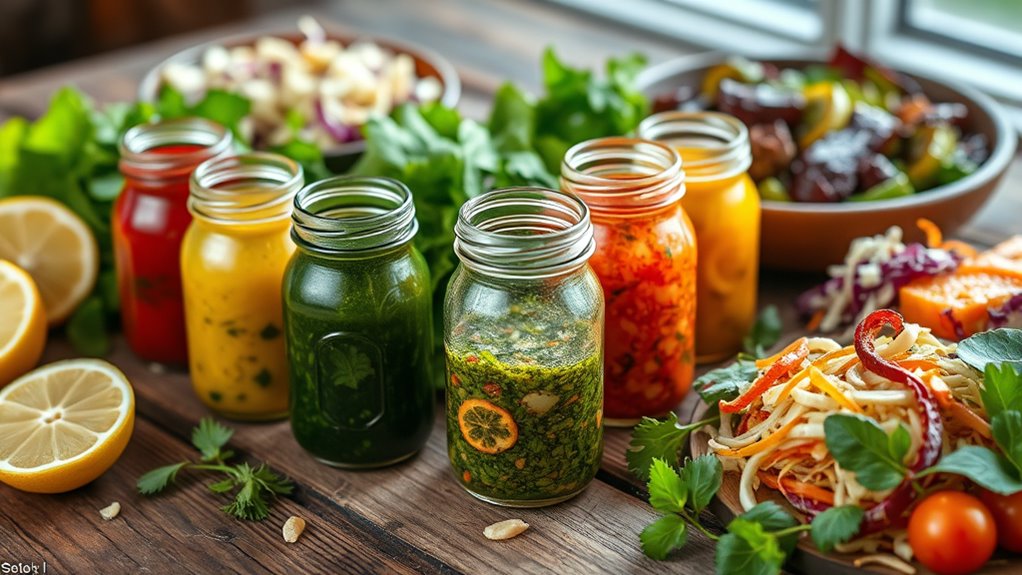
Serving ideas for Whole 30 salad dressings keep the flavor bright while staying within guidelines. You’ll want dressings that enhance greens without overpowering them. Start with olive oil–based emulsions for texture and heart-healthy fat, then add acid like lemon juice or vinegar to brighten each bite. Use fresh herbs, garlic, or shallots to layer aroma without off-plan ingredients. Serving suggestions: drizzle over mixed greens, cabbage slaws, or grain bowls, then toss briefly to distribute flavor evenly. Pairing options include roasted vegetables, grilled chicken, or seafood to create balanced meals that feel satisfying. Aim for counterpoints in acidity and sweetness to keep meals interesting. Store dressings, shake before use, and adjust seasoning to taste for consistent results.
Tips
Tips: Keep dressings simple and bright. You’ll gain flavor without extra ingredients, staying aligned with Whole30 goals. Use a base of olive oil or avocado oil, plus acid, and adjust with seasonings for balance. When you mix, you’ll discover that small tweaks yield big taste, even with minimal ingredients. Focus on texture and mouthfeel to feel satisfied.
- Start with a reliable salad dressing base and vary the acid (lemon, lime, or vinegar) for recipe variations.
- Add a touch of mustard or herbs to elevate flavor without added sugar.
- Taste frequently and adjust salt, pepper, and citrus to your preference.
- Label and batch dressings for quick rides to meals and consistent results.
Food Value and Benefit
Good dressings do more than add flavor—they enhance the nutritional value of your Whole30 plan by incorporating quality fats and nutrient-rich ingredients. This dressing recipe contains healthy monounsaturated fats from olive oil and beneficial omega-3 fatty acids from nuts and seeds. It is rich in fiber and micronutrients such as vitamin E, vitamin K, magnesium, and potassium, which support overall health.
Benefits of eating this dressing include:
- Supports satiety and reduces cravings, helping you stay on track with your Whole30 goals
- Promotes energy balance and nutrient absorption for optimal body function
- Helps maintain steady blood sugar levels by avoiding added sugars and ultra-processed ingredients
- Supports gut health and improves digestion when paired with a variety of vegetables
- Provides anti-inflammatory properties through natural herbs and healthy fats
- Enhances appetite control and contributes to clearer digestion
Frequently Asked Questions
Can I Substitute Olive Oil With Avocado Oil?
Yes, you can substitute avocado oil. It has favorable oil flavor profiles and benefits for cooking and dressings, offering a mild, buttery finish. You’ll maintain texture and nutrition, supporting your freedom to customize with evidence-backed choices.
How Long Does Whole 30 Dressing Last in the Fridge?
A dressing lasts about 1 week in the fridge when stored properly. For best shelf life, use airtight containers and keep it away from light. Shelf life depends on ingredients; always smell and taste before using. Storage tips matter.
Are All Dressings Dairy-Free and Nut-Free?
Yes, not all dressings are guaranteed dairy- and nut-free; check ingredients. You should read labels, as dressing ingredients vary. For flavor variations, opt dairy-free bases, then adjust with herbs, citrus, and simple spices.
Can Dressings Be Made in Advance for Meal Prep?
Yes, you can prep dressings in advance. For meal prep tips, refrigerate in airtight jars and shake before use; dressings last about 4–7 days. Note dressing storage guidelines, and avoid separating by adding emulsifiers or citrus.
Do Dressings Require Refrigeration During Serving?
Yes, refrigerate dressings during serving. Refrigeration importance helps preserve safety and flavor, and serving temperature matters—keep them cool enough to stay fresh, but comfortably chilled for taste and texture. If room-temperature, risk spoilage increases; store properly.
